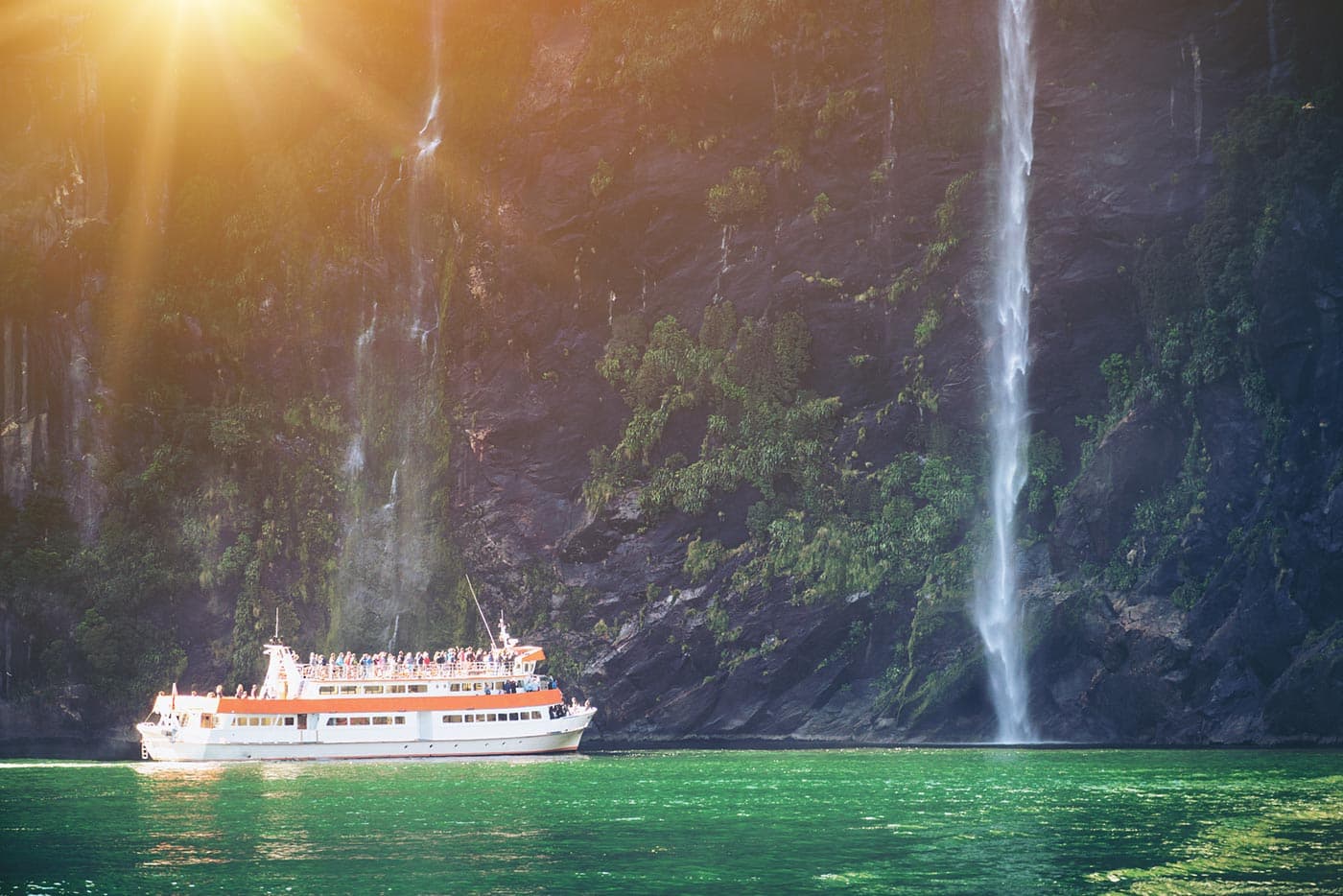
Milford TrackGreat Walk
Discover New Zealand's legendary hike: 4 days of walking through breathtaking landscapes, from rainforests to alpine peaks, including the spectacular Sutherland Falls.
The world's finest walk
The Milford Track is one of the 10 Great Walks that crisscross New Zealand. These multi-day hikes are located in particularly splendid places in the country and are protected by the government through the DOC (Department of Conservation).
This mythical 53.5 km hike traverses the Milford Sound region, one of the most visited and dazzling in the country. Nicknamed "the world's finest walk", it takes you through varied landscapes: temperate rainforests, glacial valleys, alpine lakes and spectacular waterfalls.

The 4-day itinerary
The Milford Track hike lasts 4 days and 3 nights for a total of 53.5 km. Note that this hike is not a loop and is done in one direction only.

Day 1: Glade Wharf → Clinton Hut
Take a boat from Lake Te Anau (1h15 journey) to reach Glade Wharf. This first day of hiking is short and allows for acclimatization. You'll reach the first hut, Clinton Hut, equipped with beds with mattresses, toilets, stoves and solar lighting.

Day 2: Clinton Hut → Mintaro Hut
The route takes you from Clinton Hut to Mintaro Hut. This day is a gentle uphill climb for most of the route. The hut for this second night is located at about 600 m altitude, offering magnificent views over Clinton Valley.

Day 3: Mintaro Hut → Dumpling Hut
The most challenging day! You'll pass through Mackinnon Pass Shelter (1154 m), the highest point of the hike. Weather permitting, you'll have magnificent views of Sutherland Falls (581 m), which were long considered the highest waterfalls in New Zealand.

Day 4: Dumpling Hut → Sandfly Point
Last day of this legendary hike, easier than the previous one. You'll follow the Arthur River, see Mackay Falls (25m) and Giant Gate Falls (30m). The arrival is at Sandfly Point where a boat will take you back to Milford Sound in 20 minutes.
Practical tips
Everything you need to know to prepare and succeed your adventure on the Milford Track.
Mandatory Booking
- •Season: Late October to late April
- •Booking opens: June for the following season
- •Foreign visitors: NZ$140 per night (NZ$420 total)
- •Locals: NZ$70 per night
- •Limited spaces: Book as soon as bookings open!
⚠️ Important: Camping prohibited, huts mandatory. One-way only.
Equipment & Huts
Huts equipped with:
- ✓Beds with mattresses
- ✓Stoves and basic utensils
- ✓Toilets and cold water
- ✓Solar lighting
You need to bring:
- •Food for 4 days
- •Sleeping bag and clothing
- •Wet wipes (no showers)
- •Freeze-dried meals recommended
Transport & Access
Departure - Glade Wharf:
- • Boat from Te Anau Downs (27 km from Te Anau) - booking required
- • 3 departures/day: 10:30am, 1:00pm, 2:00pm
- • Duration: 1h15
Arrival - Sandfly Point:
- • Boat to Milford Sound (20 min)
- • Bus to Te Anau, Queenstown or The Divide
You need to book transport to reach the start of the hike. This booking is in addition to the hut reservation. DOC does not manage transport.
Several companies offer packages combining boat and bus to facilitate access to the Milford Track departure point. These include Fiordland Outdoors, Real NZ or TrackNet.
Budget NZ$145 for a one-way boat + bus from Te Anau Downs. You can also opt for departure from Queenstown or Te Anau, with higher rates.
For the return from Sandfly Point, a boat will bring you back to Milford Sound. Here too you will have the choice to opt for a return to Te Anau Downs, Te Anau or Queenstown by bus.
Ready for the adventure?
The Milford Track is a unique experience that requires careful preparation. Book as soon as possible to not miss this legendary hike.
Frequently Asked Questions about the Milford Track
Everything you need to know to prepare your adventure on the world's finest walk.
These articles might also interest you
Complete your preparation with our other essential Milford Sound guides

Milford Sound Cruise
Explore the wonders of Milford Sound with our complete cruise guide: options, tips and best experiences to discover the fjords.

Where to stay at Milford Sound
Complete accommodation guide: Milford Sound Lodge, camping, overnight cruises and alternatives in Te Anau and Queenstown.

Milford Sound from Queenstown
How to organize your visit to Milford Sound from Queenstown: transport, excursions, practical tips for an unforgettable day in Fiordland.